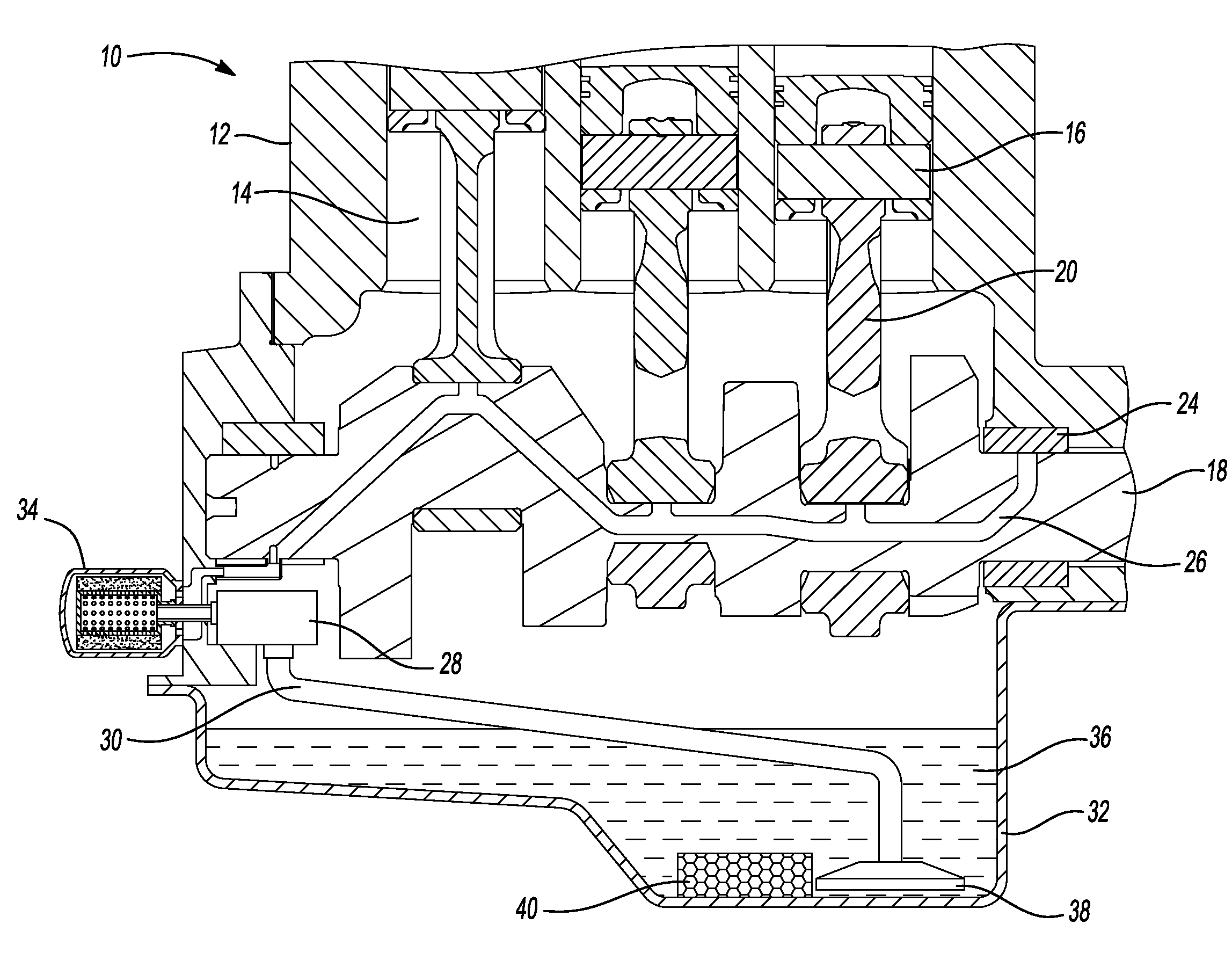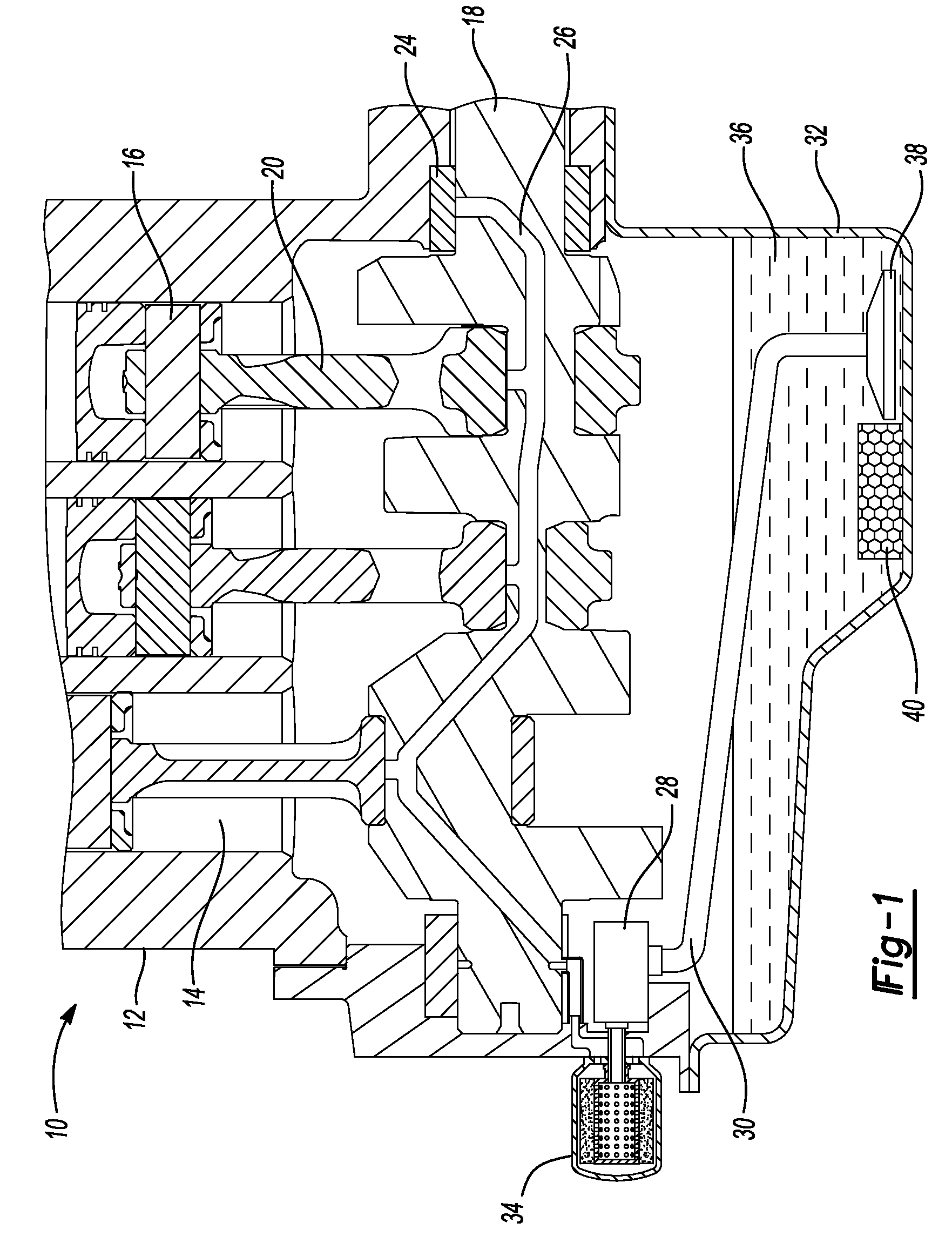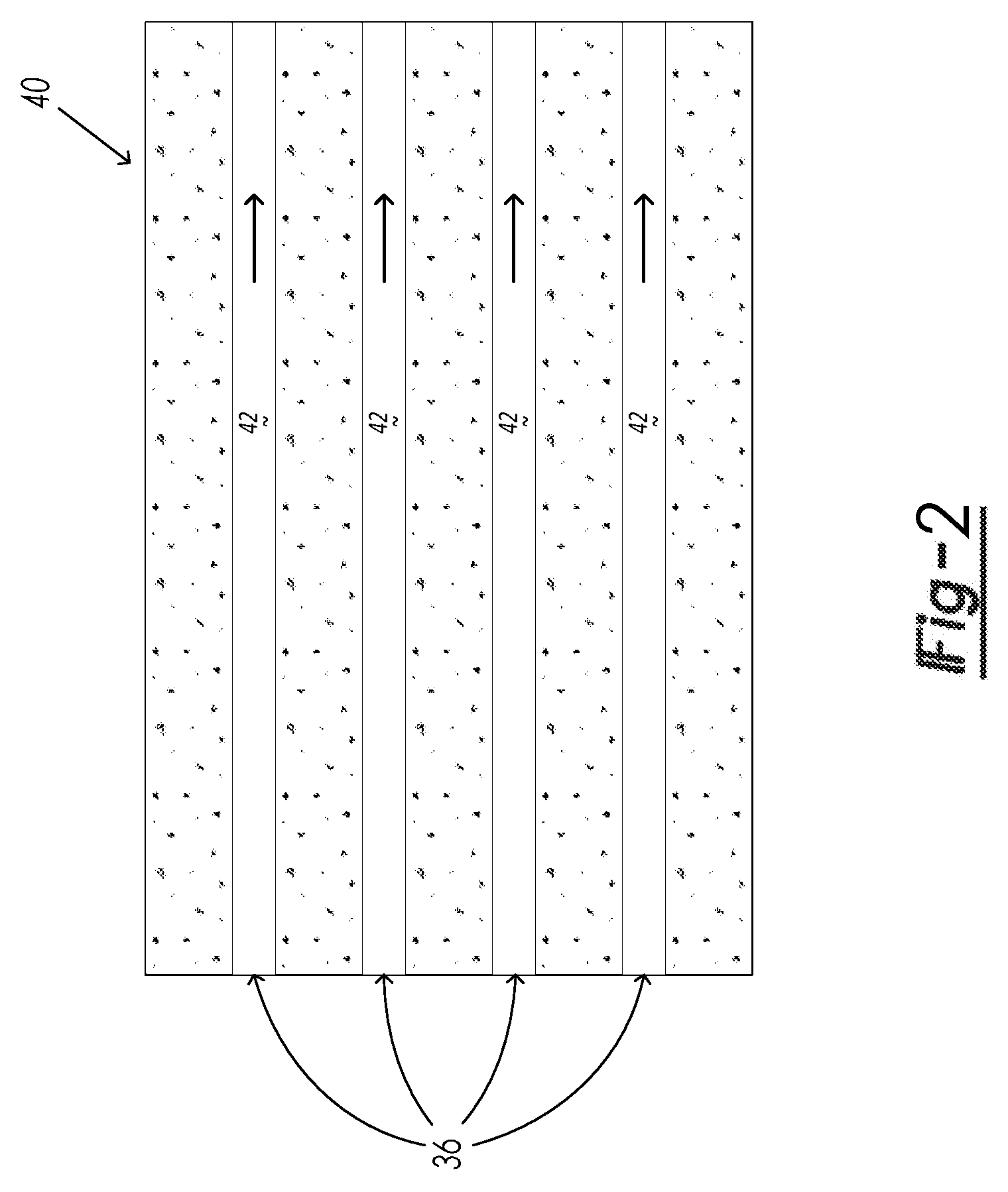Release and Retention of Viscosity Modifiers Based on Oil Temperature
a technology of viscosity modifier and oil temperature, which is applied in the direction of lubricant mounting/connection, separation process, filtration separation, etc., can solve the problems of engine oil creating hydrodynamic drag-related frictional losses, progressive loss of viscosity index and thickening power, and loss of oil viscosity index with temperature changes, etc., to achieve greater control of oil viscosity, reduce engine wear, and improve fuel economy
- Summary
- Abstract
- Description
- Claims
- Application Information
AI Technical Summary
Benefits of technology
Problems solved by technology
Method used
Image
Examples
Embodiment Construction
[0028]A detailed description of exemplary, nonlimiting embodiments follows.
[0029]The lubrication system includes a lubricant having a viscosity modifier and a molecular sieve material having a pore size at temperatures below a threshold temperature selected to adsorb molecules of the lubricant viscosity modifier, wherein the molecular sieve material has a thermal expansion behavior causing a change in pore size as the threshold temperature is reached so as to release the viscosity modifier molecules at about the threshold temperature so that the viscosity modifier molecules are in the lubricant at temperatures from about the threshold temperature and higher.
[0030]The lubricant may be any of those used as engine oils, transmission fluids, hydraulic fluids, gear oils, marine cylinder oils, compressor oils, refrigeration lubricants, aviation turbine oils, gas turbine oils, passenger vehicle engine oils, commercial vehicle engine oils, industrial, marine, hydraulic, aviation, and drivel...
PUM
| Property | Measurement | Unit |
|---|---|---|
| threshold temperature | aaaaa | aaaaa |
| threshold temperature | aaaaa | aaaaa |
| size | aaaaa | aaaaa |
Abstract
Description
Claims
Application Information
 Login to View More
Login to View More - R&D
- Intellectual Property
- Life Sciences
- Materials
- Tech Scout
- Unparalleled Data Quality
- Higher Quality Content
- 60% Fewer Hallucinations
Browse by: Latest US Patents, China's latest patents, Technical Efficacy Thesaurus, Application Domain, Technology Topic, Popular Technical Reports.
© 2025 PatSnap. All rights reserved.Legal|Privacy policy|Modern Slavery Act Transparency Statement|Sitemap|About US| Contact US: help@patsnap.com



